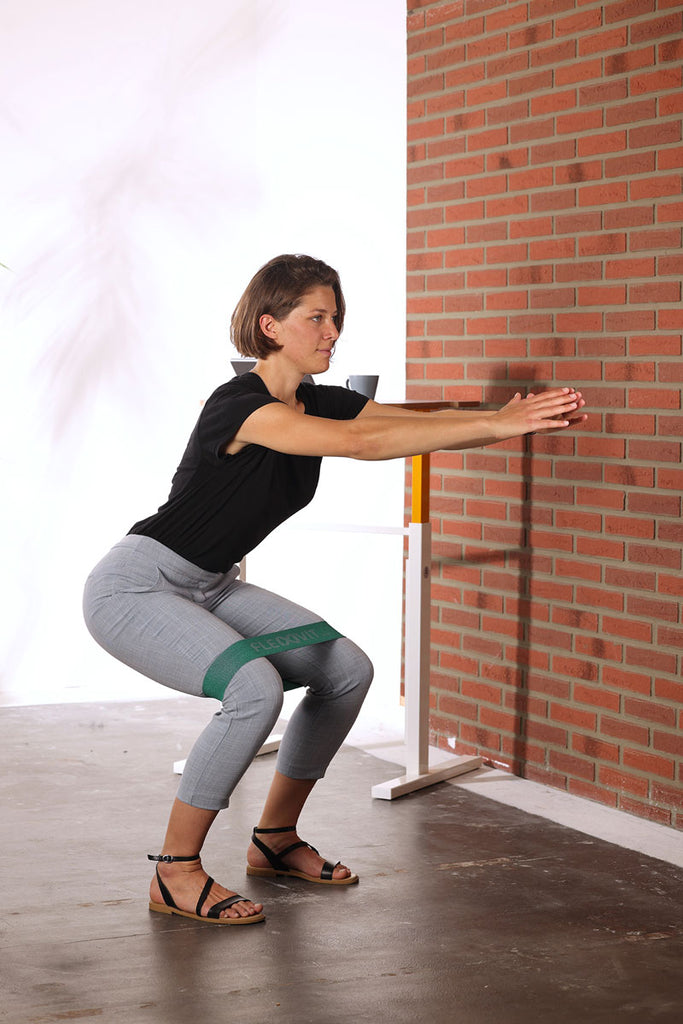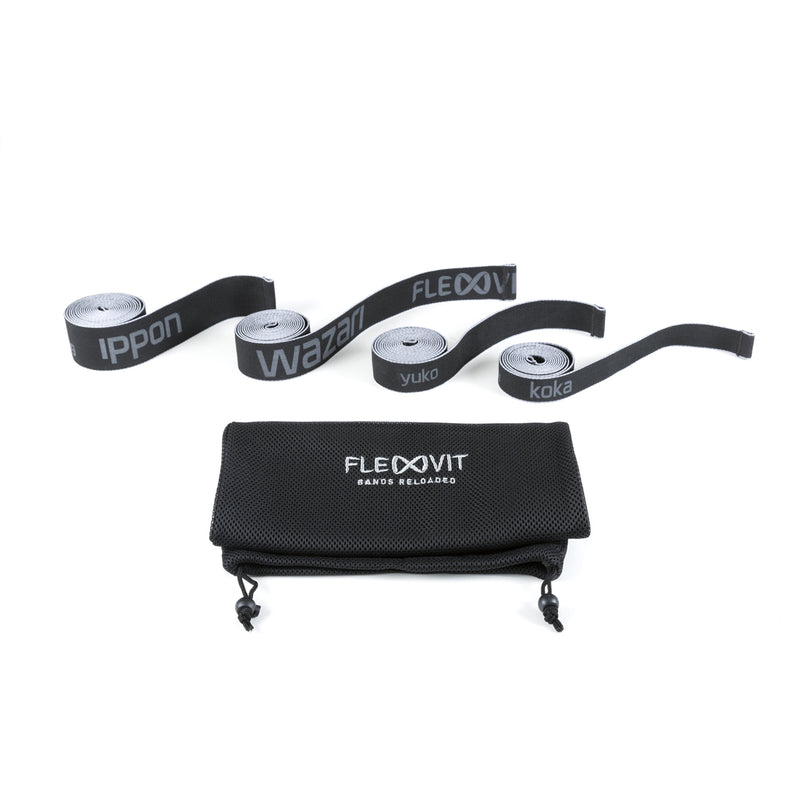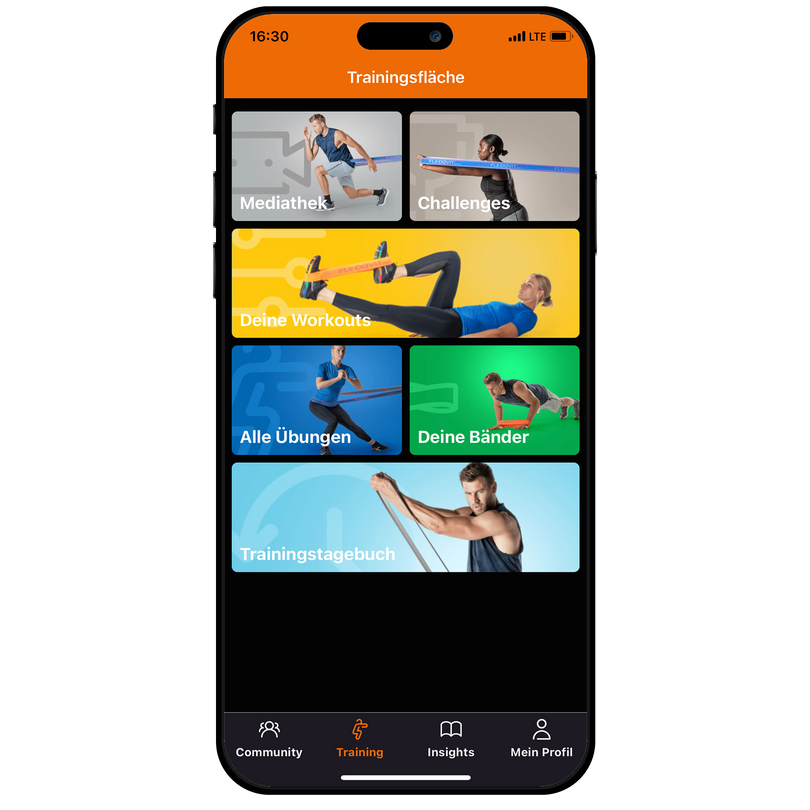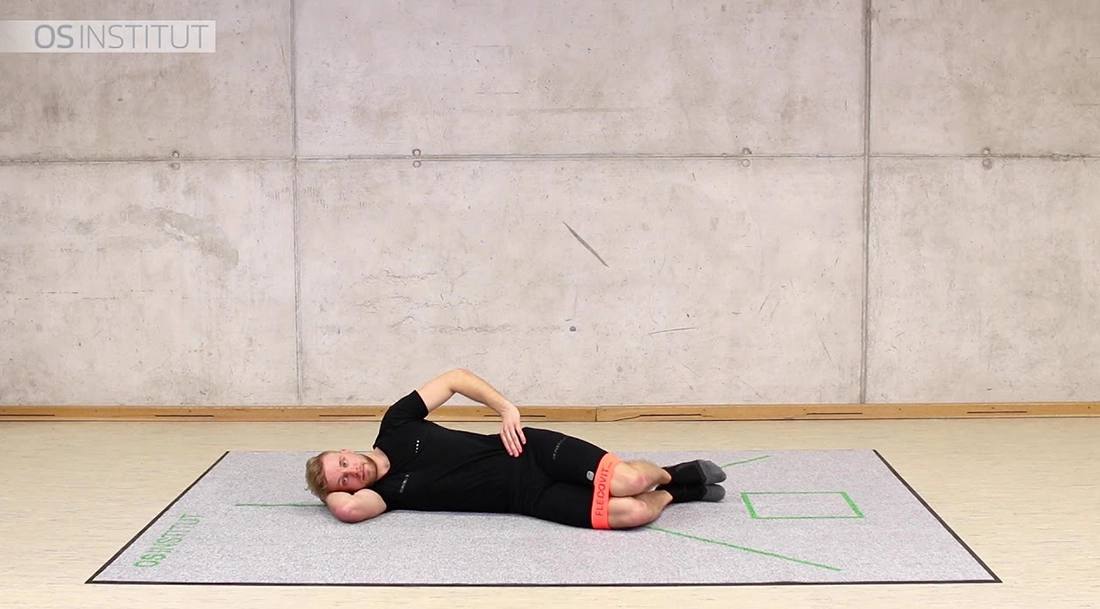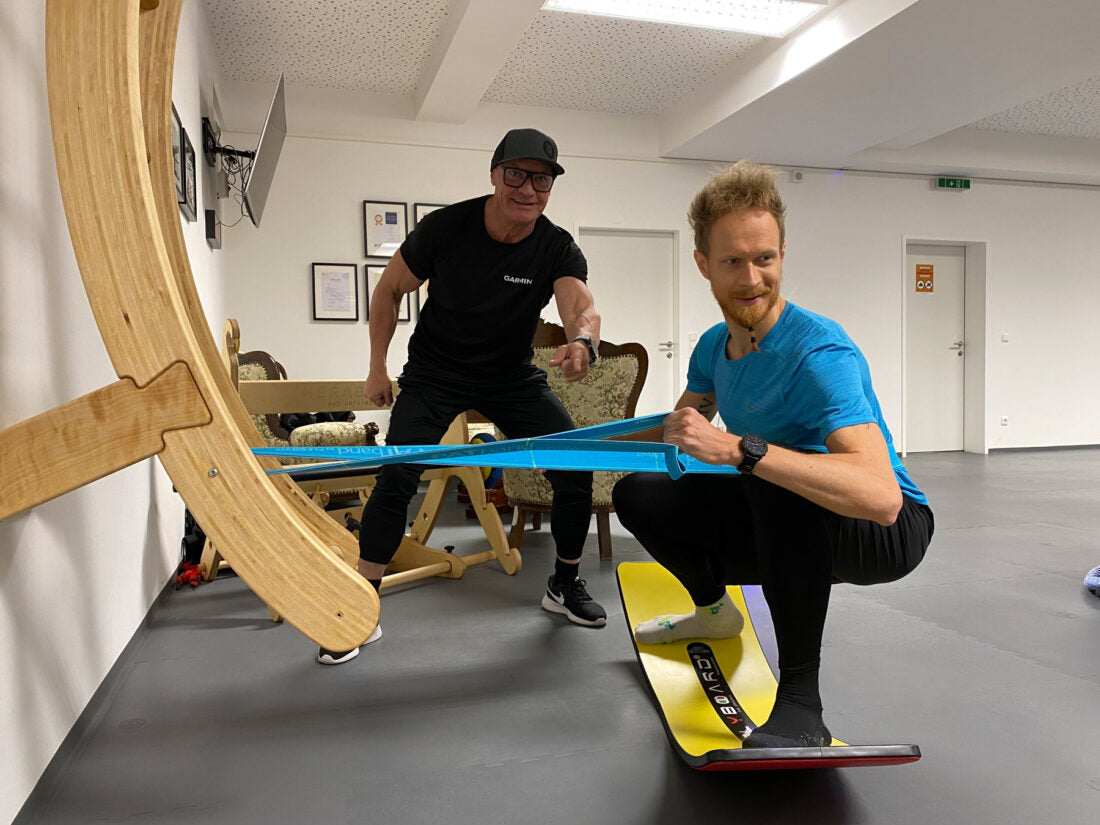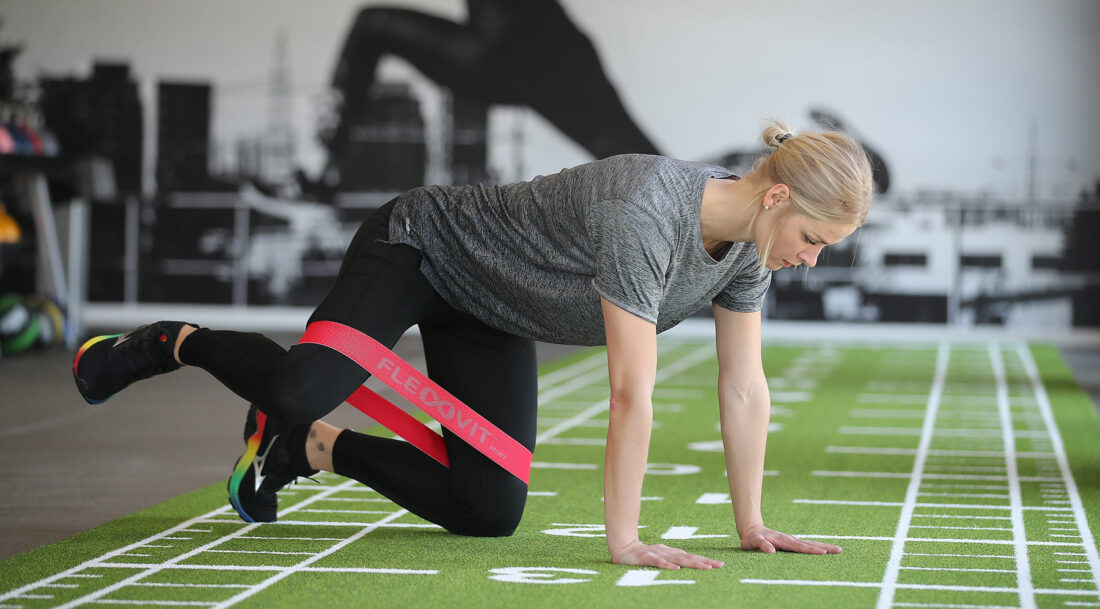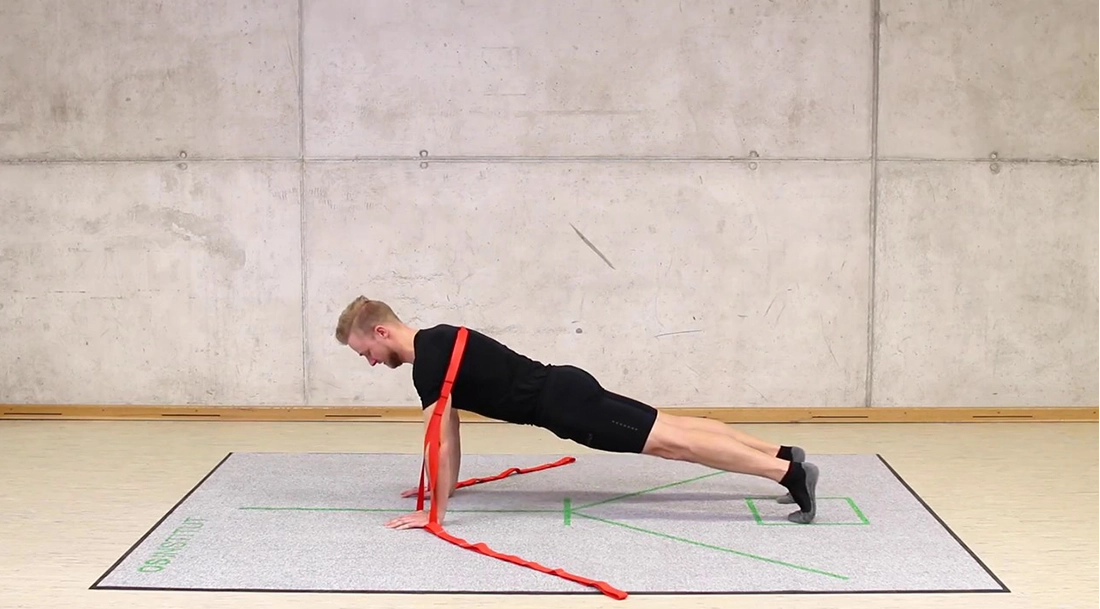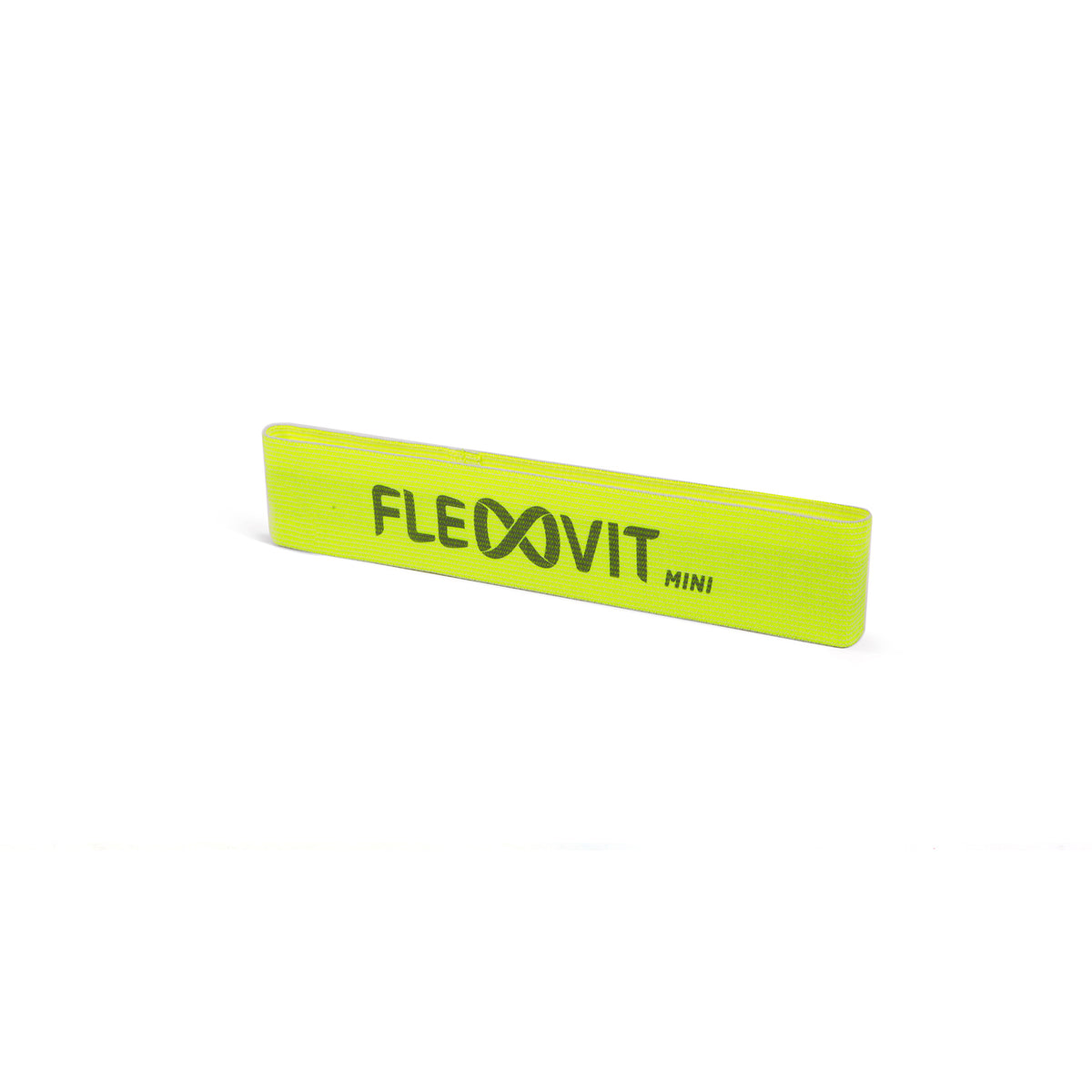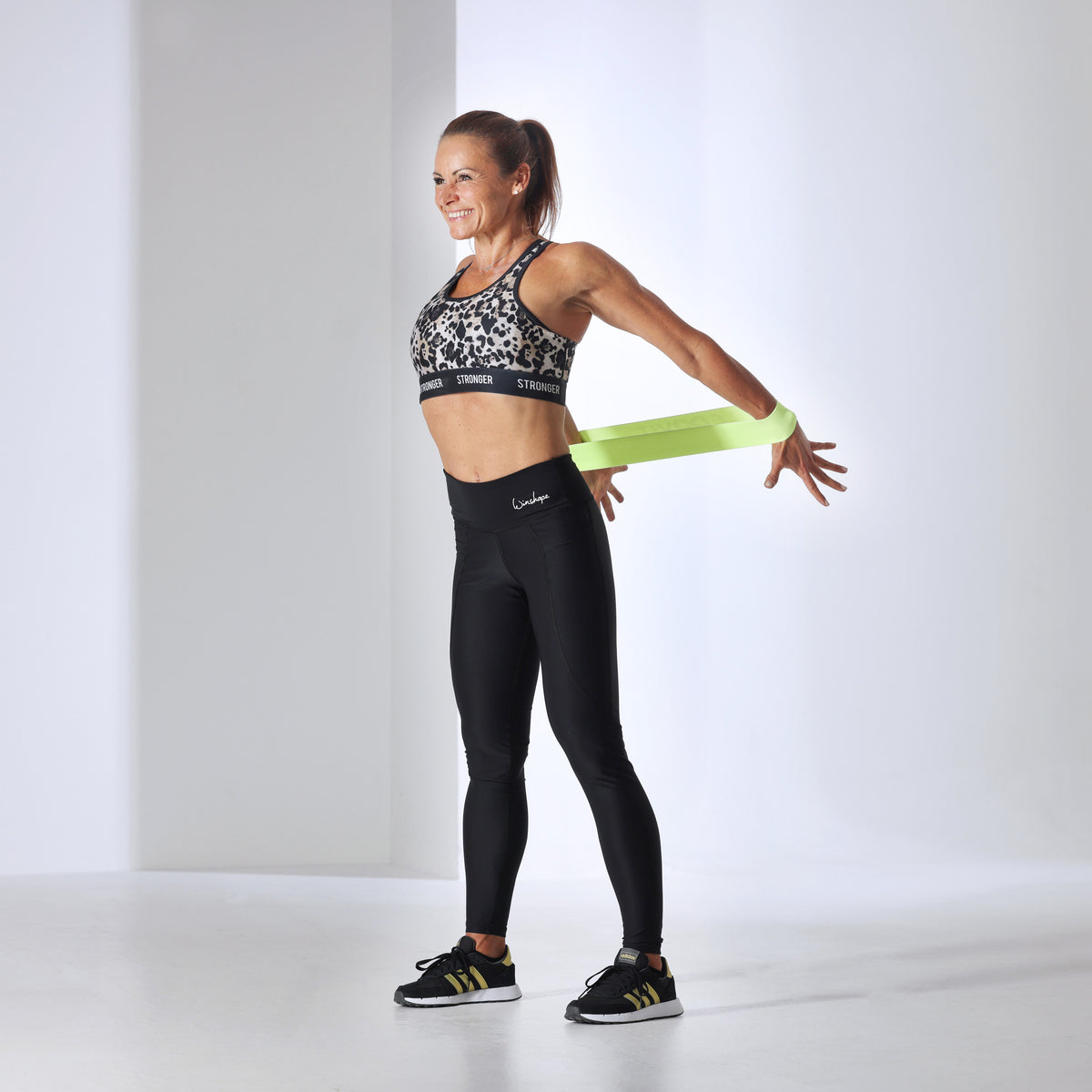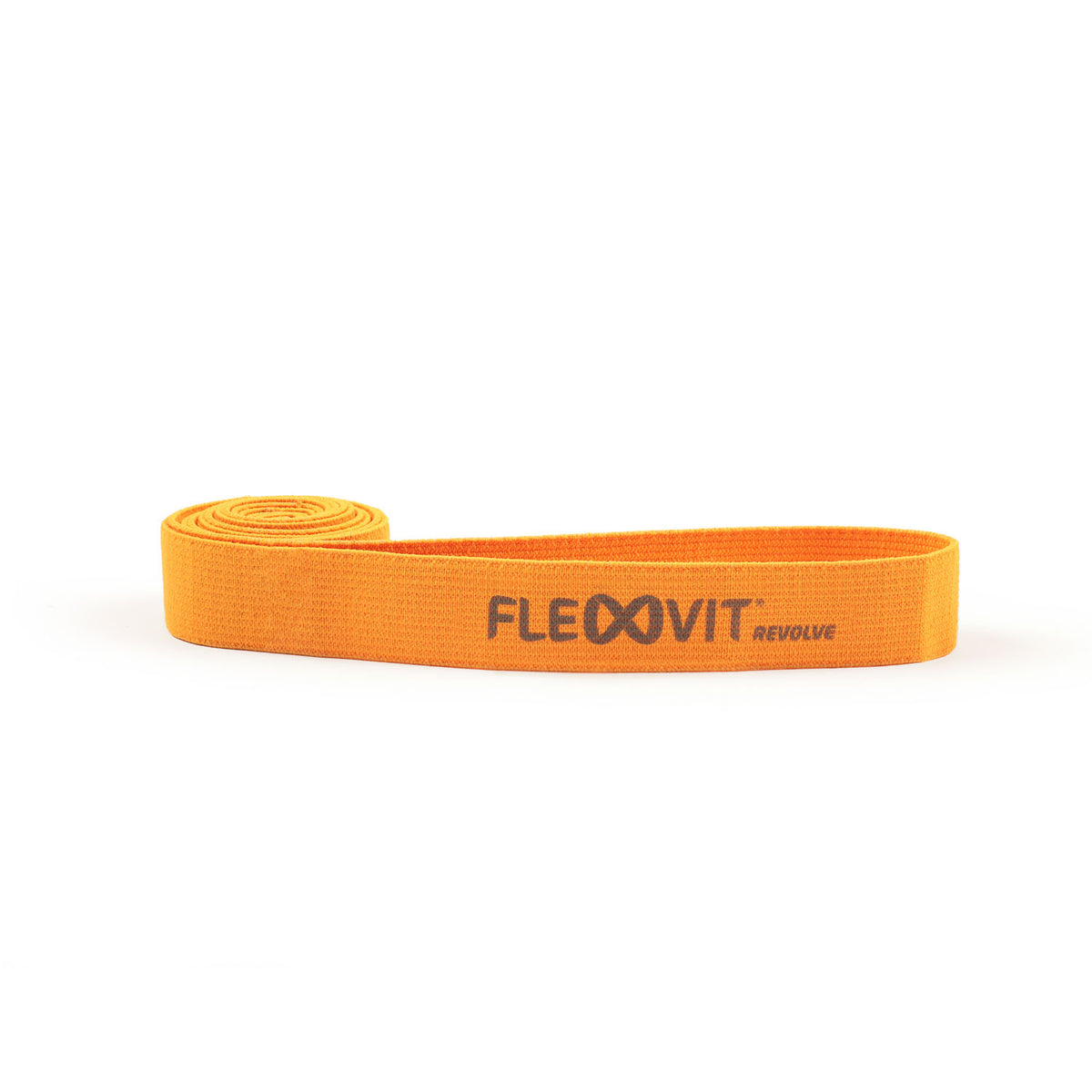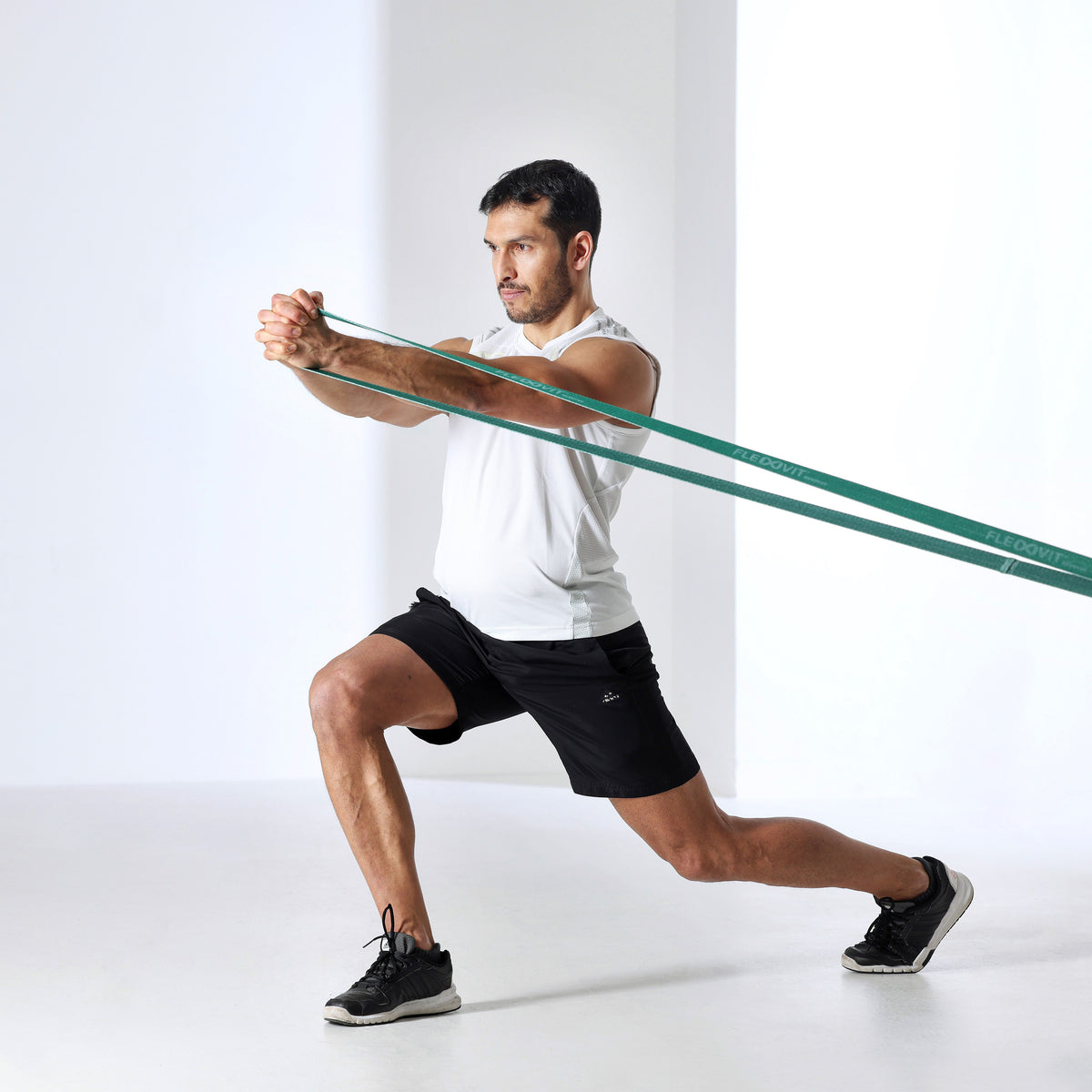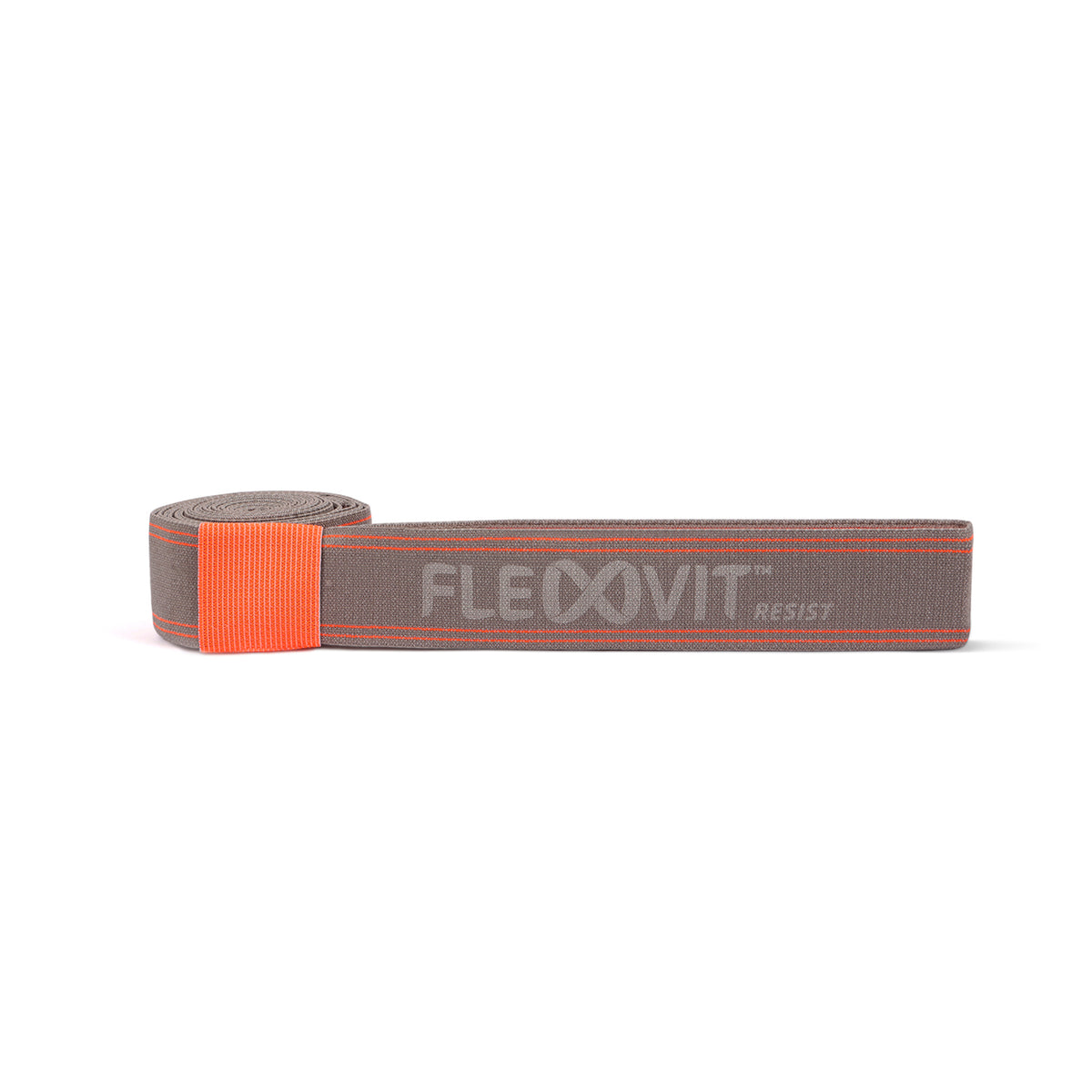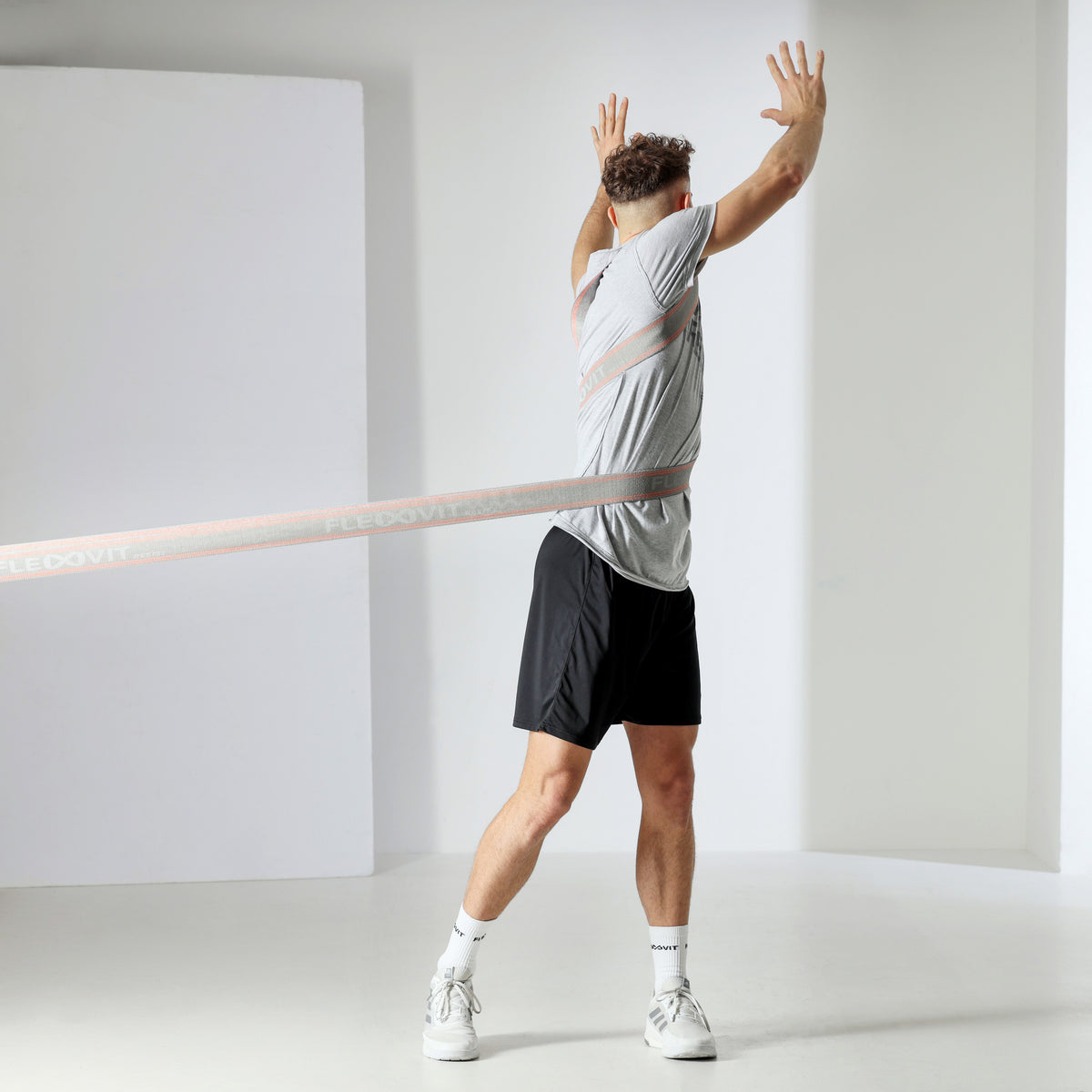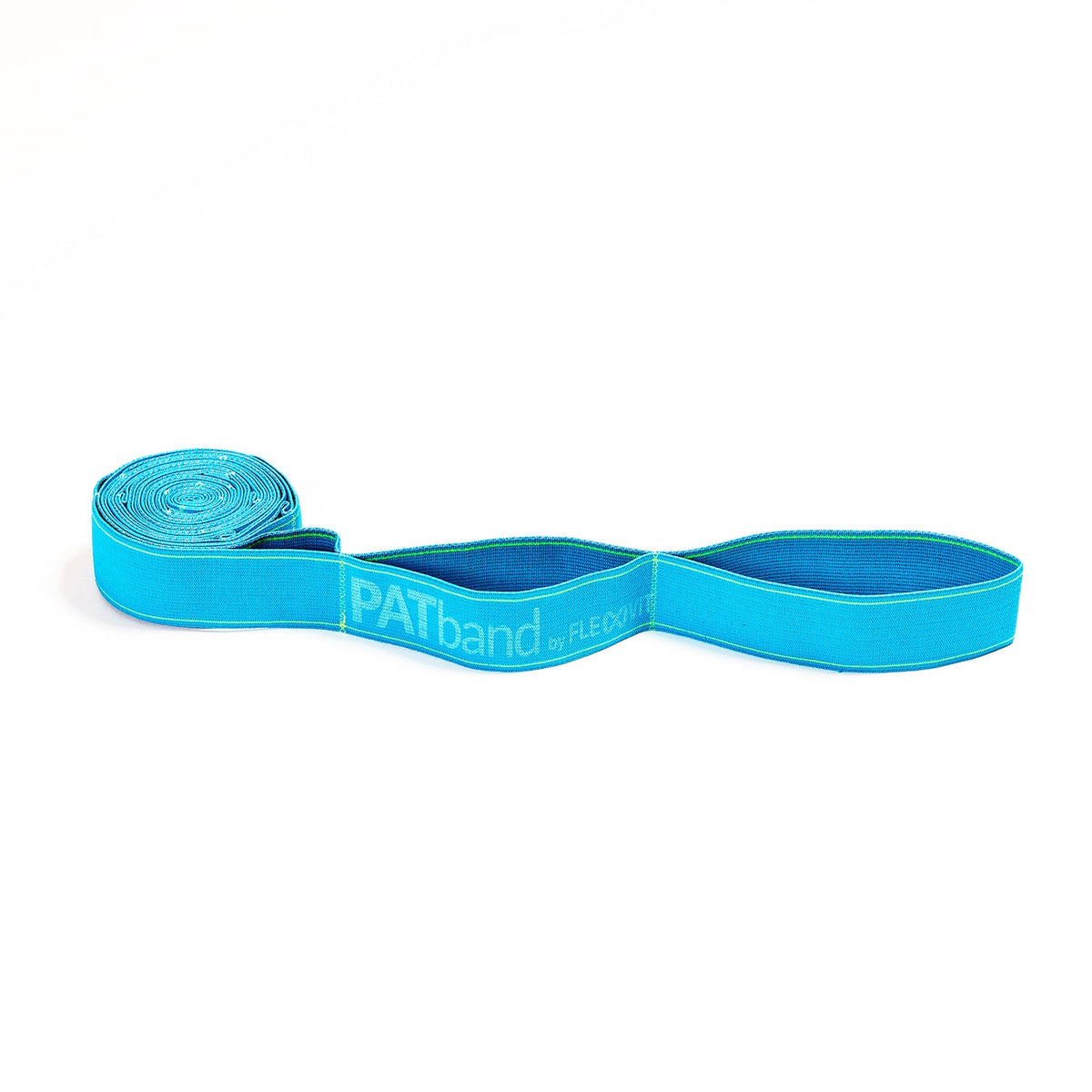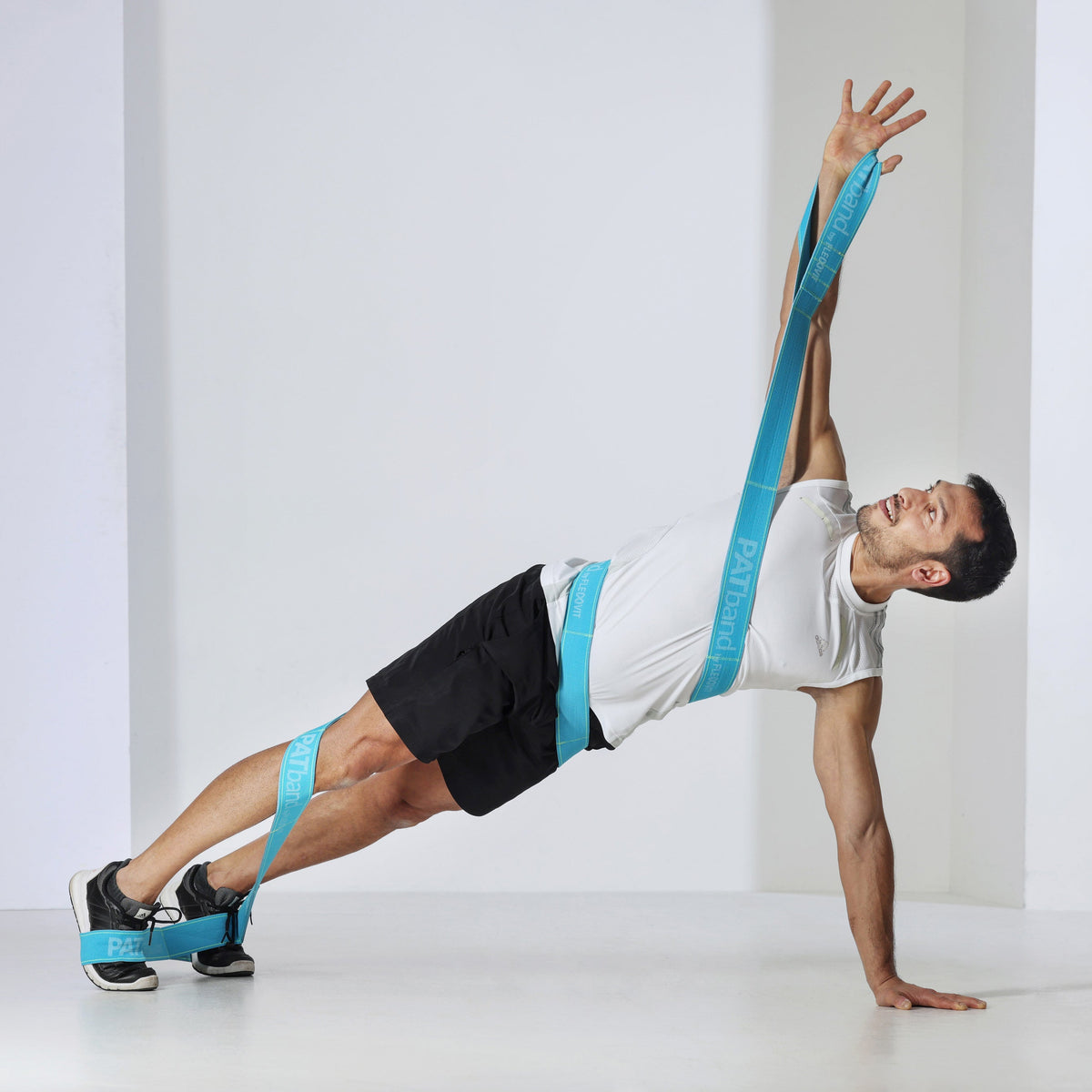We'll show you how exercise works at work and how you can increase your concentration - with the fitness bands from FLEXVIT and Functional Training!
Most of us spend most of our day at work. Office jobs almost confine us to our office chairs. With our backs hunched, we spend hour after hour on our butts while we stare at the screen. Countless studies have shown that this posture damages our bodies in the long term and poses certain health risks. It's not just long-term damage that can be prevented if you make your everyday work more active and active: exercise helps immediately. It's actually quite logical, because when you move your body, you naturally get your entire organism going. How and why? We'll tell you now!
Content overview:
- What is movement anyway?
- Why does exercise increase our concentration?
- Everyday tips – this is how you can easily integrate more exercise into your everyday life!
- Functional training at work – we show you what exercise looks like at work!
What is movement anyway?
What actually happens in our bodies when we move? To put it bluntly, our muscles, tendons and ligaments work when we are active. When we move consciously, this impulse starts in our cerebral cortex. From here, our brain sends motor signals via the spinal cord, the “highway” of our central nervous system, to the corresponding muscle parts.
Contractions in our muscles then ensure that something happens. The word “contraction” means that the muscles tense and shorten for a short time. This causes solid body structures such as bones and joints to move. To do this, our blood must supply our muscles with more nutrients, especially oxygen. This is why our heart beats faster and stronger when under stress. Because our cardiovascular system is a large, interconnected network, you get your entire body rolling, even if you only move one part.
Why does exercise increase our concentration?
Once the blood flows, it flows throughout the entire body. This stimulates the supply of nutrients and oxygen to all organs - this also applies to our brain.
More fuel also means more performance. Thought processes are also strenuous processes. Exercise makes more oxygen and glucose available to our brain. And that has a direct impact on our cognitive performance. Movement also increases the exchange of information between nerve cells. Our mental capacity, our ability to concentrate and our memory performance are improved. Exercise has even been proven to slow down aging processes.
Exercise releases the body's own hormones, so-called endorphins. They are also colloquially known as happiness hormones because they have a euphoric effect. If we actively shake a few of these mood enhancers out of our body, this will lower our stress levels. In this state we are more relaxed, more productive and more concentrated.  Create more joy through exercise at work - with the resistance bands from FLEXVIT
Create more joy through exercise at work - with the resistance bands from FLEXVIT
How long should you exercise?
It is advisable to exercise at least once an hour. As described above, this is beneficial for blood circulation and therefore beneficial for our ability to concentrate. We'll tell you below how you can naturally integrate small exercise breaks into your everyday work routine.
Practical everyday tips – this is how you can naturally integrate more exercise into your everyday life!
- Just a phone call today and no video call? Then, while you're at it, walk around your office, up and down the stairwell, or maybe even take a walk in the fresh air?
- Team meetings and stand-ups can also be held standing up on site.
- Stairs or elevator? Stairs or escalator? Always choose the stairs if you can - because every step counts and every step counts twice.
- Do you get to work by car or by train? Every now and then, get off a stop earlier and walk a bit more or consciously park a little further away from your office.
- If you take the train, you can also forego the seat and travel standing up.
- Use the toilet or kitchen on the other floor.

Even small changes in your everyday routine can make a big difference - just try out our everyday tips!
Functional training at work – here’s how it works!
More exercise in everyday life is always good. But anyone who spends long hours in the office is often familiar with the physical problems that come with it: back and neck pain are not uncommon. With the FLEXVIT bands, simple movements can specifically activate specific muscle groups. You don't need a lot of time or space for this. Here we explain five exercises that can get your blood circulation going quickly and effectively, even behind the desk!
Functional training for the upper body
Feel free to swing your arms a little before you start the exercises. Cold and, above all, immobile muscles can also quickly become strained if pressure is applied to them too suddenly. Feel consciously about the exercises and increase the resistance slowly rather than going too hard too quickly.
We also recommend that you perform all upper body exercises with a shoulder-width stance and with your knees slightly bent - this gives you stability and support. Always make sure that your stomach and back remain active during all exercises - this does not mean that you should tense up. Just try to stand upright with your back straight.
Mobilize shoulders
We often sit at our desk for hours with our shoulders slumped forward and our back hunched. With this easy exercise you open and stretch your chest and shoulder muscles. This pleasant stretching mobilizes and stimulates blood circulation.
Execution:
Hold the FLEXVIT Multi in both hands. Stretch your arms straight out in front of you and bring the band between your hands into a comfortable tension. You should probably feel a pleasant pulling sensation in your shoulder now.
Now lift your arms up to the sides, over your head and then back as far as you can get and it is still comfortable. During this time, always keep the FLEXVIT Multi energized. You should now feel a soothing stretch in your chest. Then lift your arms forward again past the sides of your head. You can repeat this movement sequence 10 to 15 times. Do this slowly. Stay with your arms in front or behind for at least 15 seconds. There you can use small and gentle plus movements to provide extra stimulation to the chest and shoulder muscles. 
Shrugs
Shrugs, or in German, the classic shoulder raise, train the neck muscles, more precisely the upper area of your hood muscle.
Execution:
Take one end of the FLEXVIT Multi in one hand and then stand on the band with both feet shoulder-width apart. Try to stand in the middle of the band as much as possible so that you can build up equal pressure on both sides.
Your arms remain stretched while you now pull your shoulders upwards. Briefly hold the tension here for 5 to 10 seconds and then lower your shoulders in a controlled manner. You can repeat this exercise 10 to 20 times.
Shoulder external rotation
With this exercise you train the rotator cuff and the external rotators of your shoulder.
Execution:
Hold the FLEXVIT Mini between both hands. Try to keep your upper arms as close to your body as possible throughout the exercise. You should also try to keep your elbows, which are bent at a 90° angle, close to your chest throughout the entire exercise.
Now move your forearms outwards and pull the fitness band apart. This causes your shoulder blades to contract. Hold this tension for one to two seconds and then slowly bring your forearms together again in front of your body.
Functional training for the posterior chain
Side leg raises
With this exercise you train the adductors and your glutes. Here too, pay particular attention to ensuring that you have an upright posture and that your back and stomach are activated.
Execution:
Depending on how it feels best for you, you can place the FLEXVIT Mini directly over your knees or over your ankles. Feel free to try both variants. For more stability, you can also hold on to your desk or a wall, as this exercise is performed with one leg.
Stand with your feet hip-width apart and begin to lift one leg to the side slowly and in a controlled manner. Once at the top, hold the tension for 5 to 10 seconds. Repeat this about 15 to 20 times and then switch legs. Try to raise and lower your leg as slowly and controlled as possible and not to work with momentum. 
Squats
The squat, a classic buttocks workout. The squat primarily trains your glutes and the front thigh. Since you have to keep your stomach and back active while doing it, you also train your core and upper body.
Execution:
Stand with your feet hip-width apart and place your FLEXVIT Mini just above your knees. You can clasp your hands in front of you if this helps you keep your torso upright.
Now you start to bend your knees and thus lower your hips, ideally until your upper and lower legs form a 90° angle. Your back remains straight; you should avoid both a hollow back and a hunchback. For this reason, at the beginning of this exercise you may not be able to bend your knees quite as deeply. The mobility of the lower back required for this also occurs quite quickly if you do this exercise more often. Also make sure that your knees do not point over the tips of your feet and that they point stable and straight forward at all times during the exercise. They should not fall inward or outward. Hold the tension down for 10 to 15 seconds and then straighten up again in a controlled manner. You can repeat this movement sequence 15 to 20 times. 